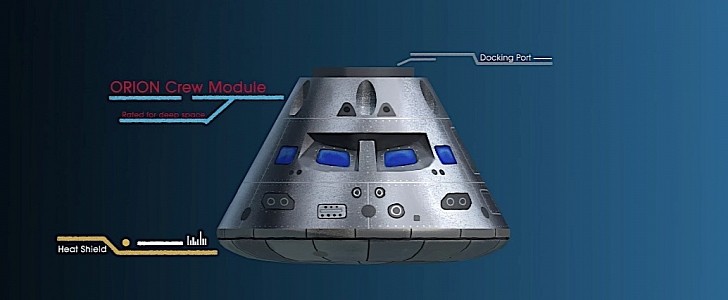There is no doubt the only way forward for humanity is to enlist the help of artificial intelligence systems, such as they presently are. They are required, you see, because humans always had a habit of biting off more than they can chew, and engage in audacious projects that are far beyond the capabilities of their brains.
One such project is the Artemis lunar exploration program. Later this year, the first flight in a longer series is set to depart for the Moon with no crew on board to test performance, life support, and communication capabilities.
Then, in 2023, astronauts will head for the Earth satellite, without landing there, followed in 2024 by the Artemis III mission that will actually put human boots on the ground after decades of absence.
Crucial to the success of the missions is the Orion capsule. Cooked up in the Lockheed Martin laboratories, Orion is the actual spaceship that will ensure astronauts arrive at their destination alive and well, and then back to Earth.
During Orion’s development, Lockheed Martin used tons of advanced technologies, including something called System Invariant Analysis Technology. SIAT for short, it is an artificial intelligence developed by NEC Corporation.
SIAT was used during the testing of the Orion capsule “to analyze the unprecedented amount of data” produced during these proceedings. What does unprecedented mean? Well, consider the fact SIAT had to comb through data coming from 150,000 sensors, and ended up establishing “over 22 billion logical relationships for analysis.“
SIAT is generally used as a tool to analyze the behavior of systems and detect inconsistencies. Once these are found, solutions to them are being designed by the AI.
Seeing the success of the technology with Orion, Lockheed Martin announced at the beginning of the month it signed a deal with NEC that would allow SIAT to be used further for the advancement of the Artemis program, but didn't specify what exactly that means.
"The power of AI is leveraged across our entire enterprise, and with a trusted partner like NEC, we gain the resources to expand its abilities at scale across our internal operations," said in a statement Rick Ambrose, executive vice president of Lockheed Martin Space.
"By proactively analyzing telemetry data we are able to deliver our systems even faster and streamline the work that our employees do every day."
Then, in 2023, astronauts will head for the Earth satellite, without landing there, followed in 2024 by the Artemis III mission that will actually put human boots on the ground after decades of absence.
Crucial to the success of the missions is the Orion capsule. Cooked up in the Lockheed Martin laboratories, Orion is the actual spaceship that will ensure astronauts arrive at their destination alive and well, and then back to Earth.
During Orion’s development, Lockheed Martin used tons of advanced technologies, including something called System Invariant Analysis Technology. SIAT for short, it is an artificial intelligence developed by NEC Corporation.
SIAT was used during the testing of the Orion capsule “to analyze the unprecedented amount of data” produced during these proceedings. What does unprecedented mean? Well, consider the fact SIAT had to comb through data coming from 150,000 sensors, and ended up establishing “over 22 billion logical relationships for analysis.“
SIAT is generally used as a tool to analyze the behavior of systems and detect inconsistencies. Once these are found, solutions to them are being designed by the AI.
Seeing the success of the technology with Orion, Lockheed Martin announced at the beginning of the month it signed a deal with NEC that would allow SIAT to be used further for the advancement of the Artemis program, but didn't specify what exactly that means.
"The power of AI is leveraged across our entire enterprise, and with a trusted partner like NEC, we gain the resources to expand its abilities at scale across our internal operations," said in a statement Rick Ambrose, executive vice president of Lockheed Martin Space.
"By proactively analyzing telemetry data we are able to deliver our systems even faster and streamline the work that our employees do every day."

